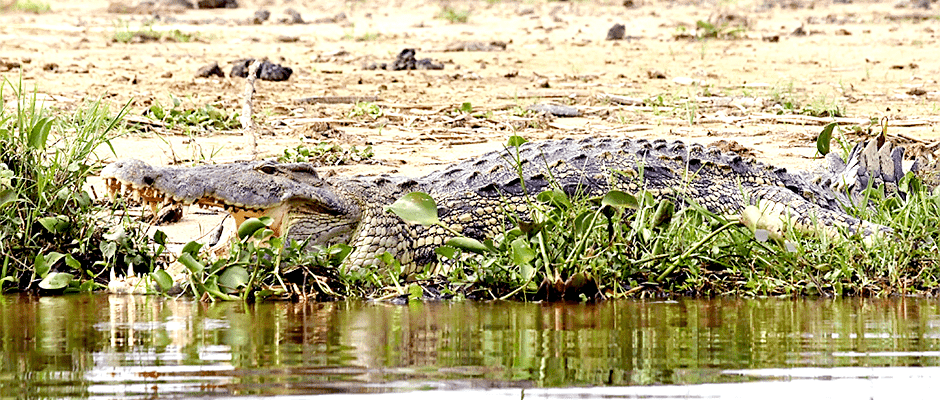Share this article
Tracking the exotic Nile crocodile in Florida
They crawl through rivers, freshwater marshes and mangrove swamps in sub-Saharan Africa, the Nile Basin and in Madagascar. At about 16 feet long and 500 pounds, the Nile crocodile (Crocodylus niloticus) is Africa’s largest crocodile, and just a few years ago four of these crocs were found in southern Florida. Recently, researchers documented that introduction and published their findings in the Journal of Herpetological Conservation and Biology.
The crocodiles were accidentally released from an educational facility that bred captive Nile crocodiles, but have since been captured, says Kristen Sommers, section leader of Wildlife Impact Management with the Florida Fish and Wildlife Conservation Commission. According to Frank Mazzotti, a professor of Wildlife Ecology at the University of Florida and a co-author of the recent study, it’s unlikely the crocodiles will become an established invasive population to worry about in Florida, despite reports from some media outlets that suggest otherwise. “There are stages of invasion, and this species … escaped from captivity and was found in the wild,” Mazzotti said. “They’re not established or breeding or causing an impact.”
In addition, Sommers says strict caging requirements in Florida ensure that exotic species such as the Nile crocodile don’t escape. “We worked with the source of the couple [crocodiles] that had escaped,” she said. “The facility decided to no longer breed crocodiles because of what happened.”
Still, there is no clear-cut way to confirm that all of the Nile crocodiles that escaped were caught, says study co-author Kenneth Krysko. “If we’re being realistic, we don’t know how many were there to start with,” said Krysko, who is the collection manager in the Division of Herpetology at the Florida Museum of Natural History. “If we don’t know how many were there to start with and they were many miles from the introduction site, how is it possible to know we got all of them?”
Even so, Sommers says that it’s unlikely the population has so far had any impact on native wildlife in the area. Further, the American crocodile (Crocodylus acutus) population, which was once listed as federally endangered, continues to recover despite the presence of the Nile crocodiles. “One [crocodile] would not be affecting American crocodiles,” Sommers said.
While there aren’t any concerted efforts to search South Florida for more of the reptiles, FWC is accepting tips from the public about unusual animal sightings. According to Sommers, there is a higher likelihood of seeing exotic animals in South Florida because the area has so many facilities with captive animals.
“There’s nothing to worry about at this moment,” Krysko said. “As an ecologist, we hope all animals introduced are now gone out of the wild, but we can’t be assured of that. Only time will tell.”
Header Image: A Nile crocodile in Murchison Falls National Park, Uganda. ©David Cook








